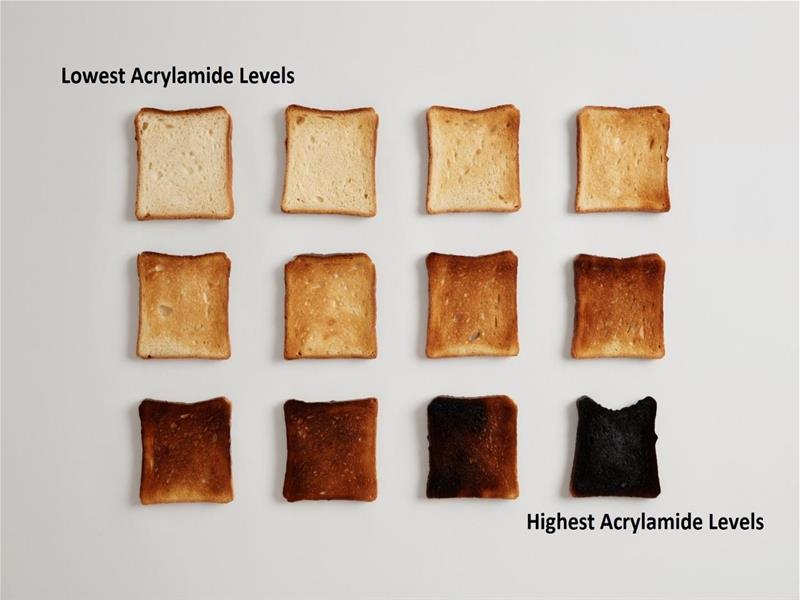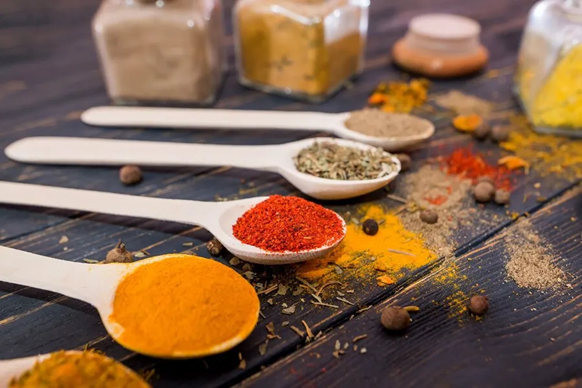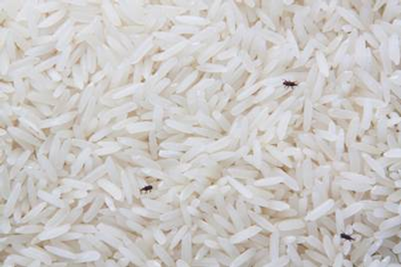Knowing acrylamide
Have you had any experience where your food turned brown during cooking? This browning can mean high levels of acrylamide, a chemical that naturally forms in starchy foods during high-temperature cooking processes such as frying, baking and roasting. Read more to find out about acrylamide, its impact on health and what you can do to reduce exposure to high acrylamide levels in your food.
Acrylamide may be found in a variety of food, including fried potato products, biscuits, bread, coffee and other starchy heat-processed food. Reducing sugars (e.g. glucose, fructose, maltose, lactose) and amino acids (mainly asparagine) are naturally found in such food. The formation of acrylamide during high-temperature cooking is part of the Maillard reaction where reducing sugars and amino acids react, causing both browning in food, as well as desirable flavours.
Note: Acrylamide levels in food are not influenced by food packaging or the environment.
The international approach to reduce consumer exposure to acrylamide
There are currently no international standards that specify safe limits for acrylamide. Many studies conducted, including long-term ones, have not found any evidence that dietary acrylamide exposure increases the risk of cancer in humans. Codex Alimentarius Commission (CAC), the international standard-setting body for food safety, adopts an “As Low as Reasonably Achievable” (ALARA) approach for acrylamide. This means that manufacturers should reduce the presence of naturally formed acrylamide as much as possible, without adversely impacting the food supply chain. In place of setting maximum limits for acrylamide, CAC as adopted a Code of Practice for the food industry to reduce the levels of acrylamide in food. Singapore, and other countries such as Australia, New Zealand, and the United States, adopts a similar position as the CAC. The EU also provides some benchmark levels to help guide food business operators to develop mitigation measures to achieve ALARA.
SFA will continue to keep abreast of the latest scientific developments surrounding acrylamide and will continue to monitor this compound in our food supply to safeguard the health of consumers.
What can the food industry do to reduce acrylamide in foods?
The food industry should refer to the Code of Practice (CXC 67-2009) published by the CAC to prevent and reduce the formation of acrylamide in foods. Some reduction measures discussed in the Code of Practice are:
For potato products:
Select potato cultivars with levels of reducing sugars as low as reasonably achievable taking into account regional and seasonal variability.
Control storage conditions of raw materials such as potatoes from farm to factory and in cold weather, protect potatoes from cold air.
In the case of potato-based snacks produced from doughs, where possible, replace some of the potatoes with other ingredients that have lower reducing sugar/asparagine content e.g. rice flour.
For cereal-based products:
In general, consider part replacement of wheat flour by rice flour.
In biscuits and bakery wares, when raising agents containing ammonium are used, consider replacements with other raising agents e.g. potassium and sodium-containing raising agents.
For bread, avoid using reducing sugars in the recipe. The addition of calcium salts e.g. calcium carbonate may reduce the formation of acrylamide.
What can consumers do to reduce acrylamide levels in foods?
The amount of acrylamide in food varies, depending on the precursors (i.e., reducing sugars and amino acids) present in food, its moisture content, the cooking duration, method and temperature of the cooking process. Consumers can follow these tips to reduce exposure to high acrylamide levels:
Adjust cooking process - duration, method and temperature to avoid browning and heavy crisping.
Eat a varied diet. Consume fried potato products and biscuits in moderation.
Instead of frying and roasting, consider other cooking methods such as boiling and steaming, which do not produce acrylamide in foods.
When frying starchy foods such as potatoes, follow manufacturers’ recommendations on cooking time and temperature to avoid overcooking, heavy crisping or burning.
Aim for a golden yellow colour or lighter, rather than a dark brown colour when frying, baking, toasting or roasting starchy foods. Avoid consuming parts of the food that are very brown in colour as such areas tend to contain more acrylamide.
Do not store potatoes under cold or refrigerated conditions, which can increase acrylamide during cooking. Instead, store potatoes outside the refrigerator in a dark, cool place.
About the Author
Herman Teo is a Senior Scientist from the Risk Assessment and Communications Department of the National Centre for Food Science. With a Masters in Food Science and Human Nutrition from the National University of Singapore, his recent work includes the regulatory framework for insects for food and feed, and examining emerging food processing risks.




